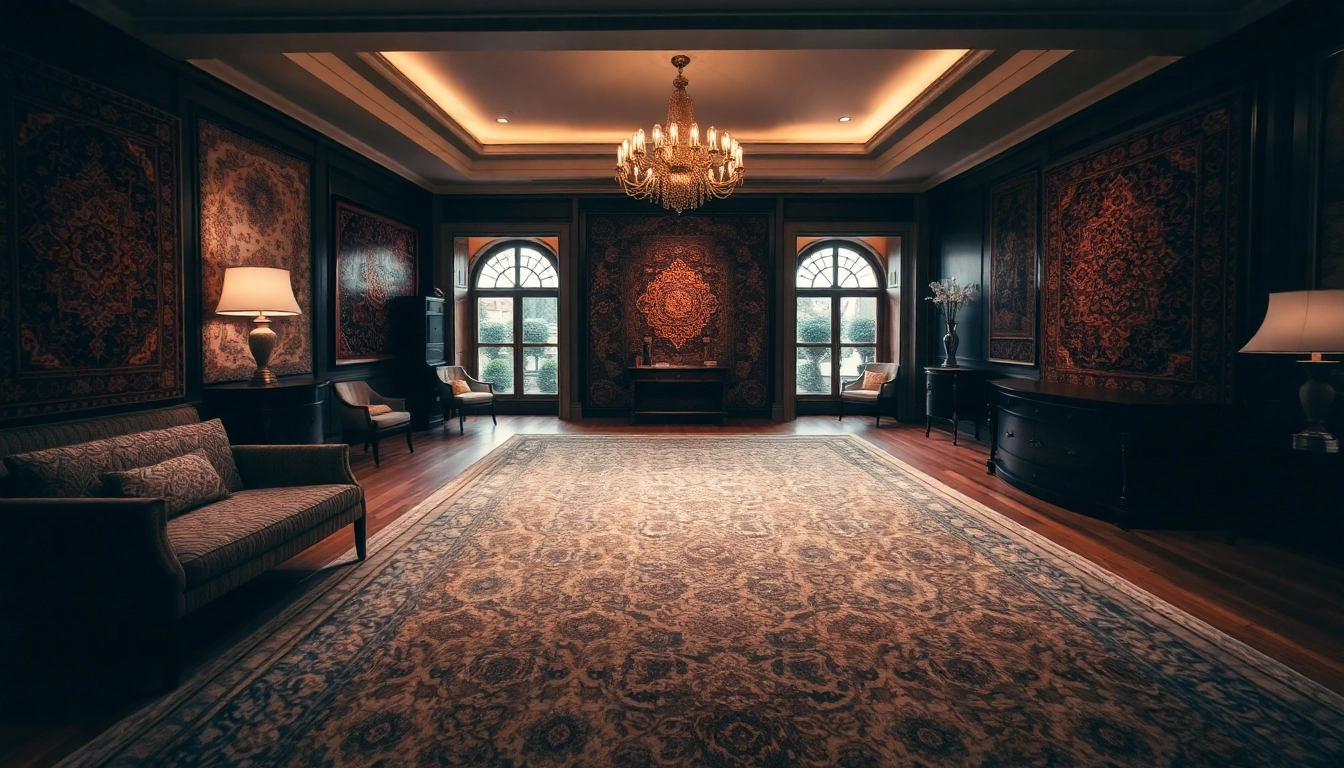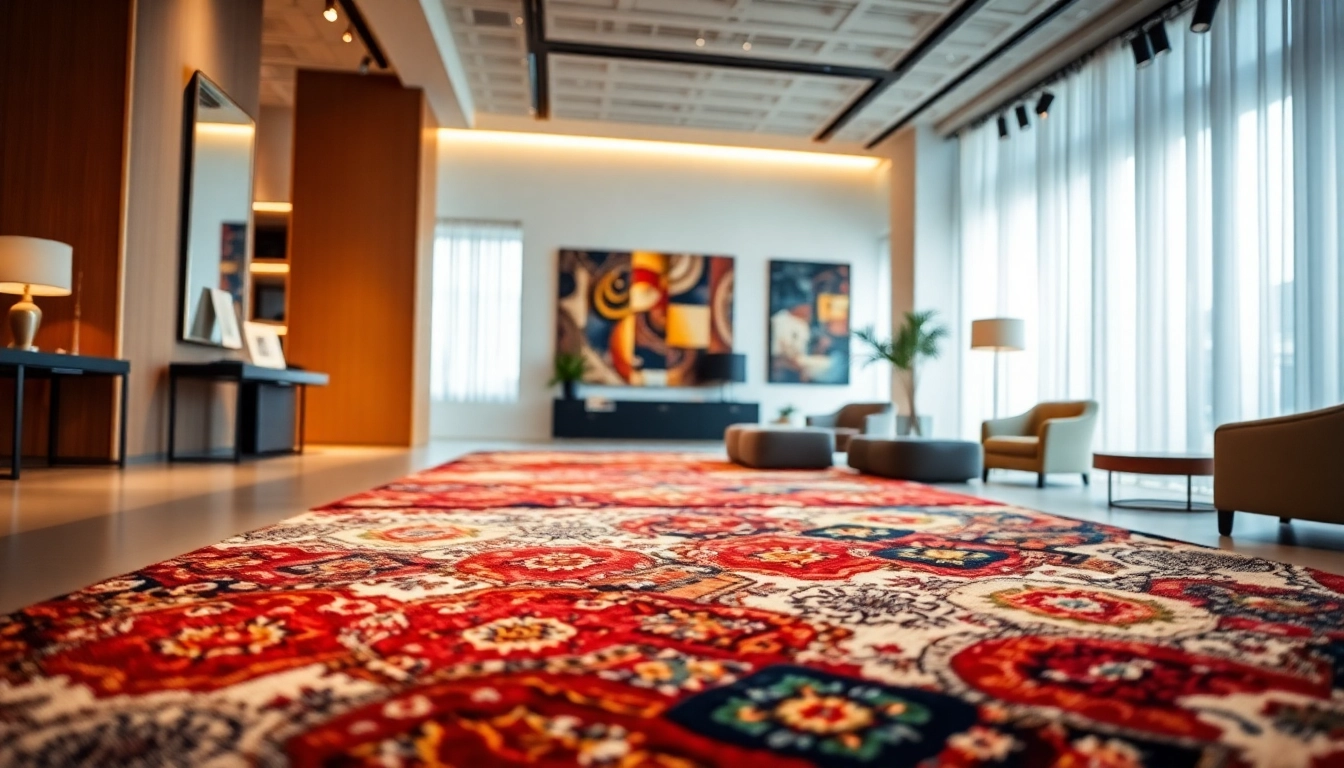In the vibrant city of Milan, renowned for its rich fashion, design, and cultural scene, the presence of exquisite Tappeti a Milano plays a vital role in shaping interior aesthetics. Whether you are a homeowner aiming to elevate your living space, an interior designer seeking authentic and high-quality pieces, or a collector of fine rugs, Milan offers a diverse and sophisticated marketplace for carpets that blend tradition, art, and innovation. This comprehensive guide explores everything you need to know about choosing, sourcing, maintaining, and investing in the finest Tappeti a Milano.
Understanding Tappeti a Milano: Styles and Materials
Modern vs. Traditional Tappeti
Milan’s carpet scene showcases a captivating blend of modern and traditional styles, catering to a broad spectrum of design preferences. Traditional Tappeti, such as Persian, Caucasian, or Berber rugs, often feature intricate patterns, rich symbolism, and handmade craftsmanship that date back centuries. These rugs serve as timeless pieces that imbue spaces with cultural depth and historical significance. Conversely, modern Tappeti emphasize sleek lines, geometric shapes, and contemporary aesthetics, aligning with minimalistic or avant-garde interior themes. They are often crafted from innovative materials or designed with bold color palettes to complement modern decor.
The choice between modern and traditional styles hinges on your personal taste, existing decor, and the ambiance you wish to create. Many Milan-based boutiques and showrooms, such as Zal Tappeti Milano, specialize in both styles, offering curated selections that harmonize heritage craftsmanship with contemporary trends.
Materials Used in High-Quality Tappeti
High-quality Tappeti are crafted from premium materials that determine their durability, appearance, and feel. The most revered raw materials include:
- Wool: Known for its softness, resilience, and insulating properties, wool is a popular choice for both traditional and modern rugs.
- Silk: Valued for its luster and fine texture, silk adds luxury and delicacy to any rug, often used in high-end Persian and Oriental pieces.
- Cotton: Utilized primarily in the foundation or backing, cotton provides strength and flexibility.
- Natural fibers (Kilim, Jute, etc.): These rustic materials offer eco-friendly options with distinctive textures suitable for casual or bohemian interiors.
Beyond raw materials, the craftsmanship—such as hand-knotting, weaving, or tufting—significantly impacts the rug’s value and longevity. Many expert artisans in Milan ensure each piece maintains authenticity, with details like knot density (knots per square inch) serving as a key indicator of quality.
Design Trends in Milano Rugs
Design trends evolve alongside Milan’s dynamic fashion and art scenes. Currently, popular trends include:
- Geometric patterns: Bold shapes and symmetry that suit modern interiors.
- Organic motifs: Floral and abstract designs inspired by nature, blending tradition with contemporary aesthetics.
- Neutral color palettes: Beiges, greys, and muted earth tones dominating luxurious and minimalist spaces.
- Vibrant accents: Bright reds, blues, and purples used sparingly to add pops of color and energy.
Many Milanese boutiques stay ahead by collaborating with contemporary designers, blending age-old craftsmanship with advances in textile art.
How to Choose the Perfect Tappeto a Milano for Your Home
Size and Layout Considerations
Choosing the right size is critical to harmonize your space. Measure your room meticulously, accounting for furniture placement and walkways. For example, in living rooms, a large rug that anchors your seating area should extend beyond the furniture edges—ideally leaving about 18-24 inches of exposed floor around the perimeter. For smaller spaces or accent rugs, select proportionate sizes that complement existing decor without overwhelming the room.
Layout considerations extend to the shape of the rug—rectangular, oval, round, or custom-cut—tailored to your room’s architecture and furnishing style.
Color Palette and Decor Compatibility
Color coordination is vital in integrating a Tappeto into your home. If your interior employs neutral tones, consider a rug with subtle hues to create a cohesive look. Conversely, a vibrant, patterned rug can serve as a focal point in minimalist rooms. When selecting colors, observe the predominant shades in your furniture, walls, and art pieces, and opt for a rug that either complements or creates an appealing contrast.
Additionally, consider the rug’s style—traditional Persian rugs with deep reds and golds work beautifully with classical decor, while modern geometric rugs pair well with contemporary interiors.
Quality Indicators and Price Ranges
Assessing quality involves examining knot density, material authenticity, craftsmanship, and finishing details. A higher knot density (more knots per square inch) indicates a more detailed, durable rug. Hand-knotted rugs often command higher prices than machine-made counterparts, reflecting their artisanship and uniqueness.
Price ranges are broad; authentic handmade Tappeti from Milan or sourced from renowned regions may cost anywhere from €1,000 to over €10,000, depending on size and rarity. It’s advisable to establish a budget aligned with your aesthetic and investment goals, and to seek transparent sourcing and certification when possible.
Where to Find the Best Tappeti a Milano
Top Shops and Showrooms in Milano
Milan is a hub for premium carpet retailers and showrooms. Among the most notable are:
- Artorient Milano: Offers a vast selection of modern, geometric, floral, and antique Persian rugs in their expansive showroom.
- Zal Tappeti Milano: Known for their wide range of authentic Persian, Oriental, vintage, and Kilim rugs, suitable for diverse interior styles.
- Cohen Tappeti: Specializing in handcrafted artisan rugs with discounts up to 70%, blending tradition with affordability.
- Art Tappeti: Located in Via Forze Armate, providing expert restoration, cleaning, and sales of high-quality rugs.
Visiting these showrooms allows for tactile examination, expert advice, and personalized service, essential for making informed decisions.
Online Stores with Authentic Offerings
Besides physical stores, Milan boasts reputable online platforms offering authentic, curated collections of Tappeti a Milano. Examples include:
- Outlettappeti.com: An extensive online shop with pre-owned and new designer rugs, alongside professional guidance.
- Tappeti.it: Featuring over 30,000 rugs, with options for quick delivery across Italy and abroad.
These e-commerce options often provide detailed descriptions, certifications, and return policies, facilitating secure online purchasing.
Custom Orders and Restoration Services
For discerning clients, Milanese artisans and workshops offer bespoke rug tailoring—custom sizes, colors, and designs matching exact specifications. Additionally, restoration boutiques like Art Tappeti provide repair, cleaning, and conservation services, vital for maintaining the beauty and value of antique or vintage rugs.
Maintaining and Caring for Your Milano Tappeti
Cleaning and Maintenance Tips
Proper care extends the life of your Tappeti a Milano. Regular vacuuming without a beater bar preserves fibers, while immediate removal of spills prevents staining. Use gentle cleaning solutions, preferably professional-grade or recommended by experts, to avoid damaging delicate materials like silk.
In high-traffic areas, rotating the rug periodically prevents uneven wear. Use protective pads under furniture and avoid direct sunlight, which can fade dyes over time.
Restoration and Repair Options
Over years, carpets may require rebinding, knot repair, or color restoration. Skilled artisans offer these services, ensuring the original craftsmanship is preserved. Timely intervention can prevent further deterioration, especially for valuable antique rugs.
Long-Term Preservation Strategies
Store rugs properly—rolled rather than folded, with acid-free paper if not in use. Maintain appropriate humidity and temperature conditions to prevent mold and fiber degradation. Professional conservation ensures your investment remains pristine for generations.
Investing in Tappeti a Milano: Value and Authenticity
Assessing Craftsmanship and Origin
Authentic Tappeti from Milan or regions like Persia, Turkey, or the Caucasus feature signatures of master artisans—uniquely tied to their cultural origins. Certifications, provenance documentation, and knot density are markers of authenticity and value.
Benefits of Handwoven Over Machine-Made Rugs
Handwoven rugs are distinguished by their intricate craftsmanship, durability, and exclusivity. They often appreciate over time, serving as both functional art and long-term investments. Conversely, machine-made rugs lack the authentic imperfections that celebrate artisanal skill, often having lower resale value.
Enhancing Home Decor with Unique Rugs
A well-chosen Tappeto a Milano can be the centerpiece of a room, adding warmth, texture, and cultural richness. The uniqueness of handmade pieces ensures that every space has a one-of-a-kind statement, elevating the overall aesthetic.



